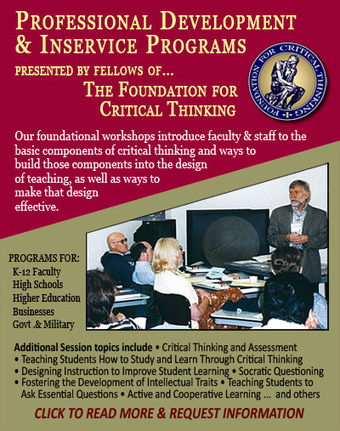Faculty Lack a Substantive Concept of Critical Thinking
Studies demonstrate that most college faculty lack a substantive concept of critical thinking. Consequently they do not (and cannot) use it as a central organizer in the design of instruction. It does not inform their conception of the student’s role as learner. It does not affect how they conceptualize their own role as instructors. They do not link it to the essential thinking that defines the content they teach. They, therefore, usually teach content separate from the thinking students need to engage in if they are to take ownership of that content. They teach history but not historical thinking. They teach biology, but not biological thinking. They teach math, but not mathematical thinking. They expect students to do analysis, but have no clear idea of how to teach students the elements of that analysis. They want students to use intellectual standards in their thinking, but have no clear conception of what intellectual standards they want their students to use or how to articulate them. They are unable to describe the intellectual traits (dispositions) presupposed for intellectual discipline. They have no clear idea of the relation between critical thinking and creativity, problem-solving, decision-making, or communication. They do not understand the role that thinking plays in understanding content. They are often unaware that didactic teaching is ineffective. They don’t see why students fail to make the basic concepts of the discipline their own. They lack classroom teaching strategies that would enable students to master content and become skilled learners.



 Your new post is loading...
Your new post is loading...







